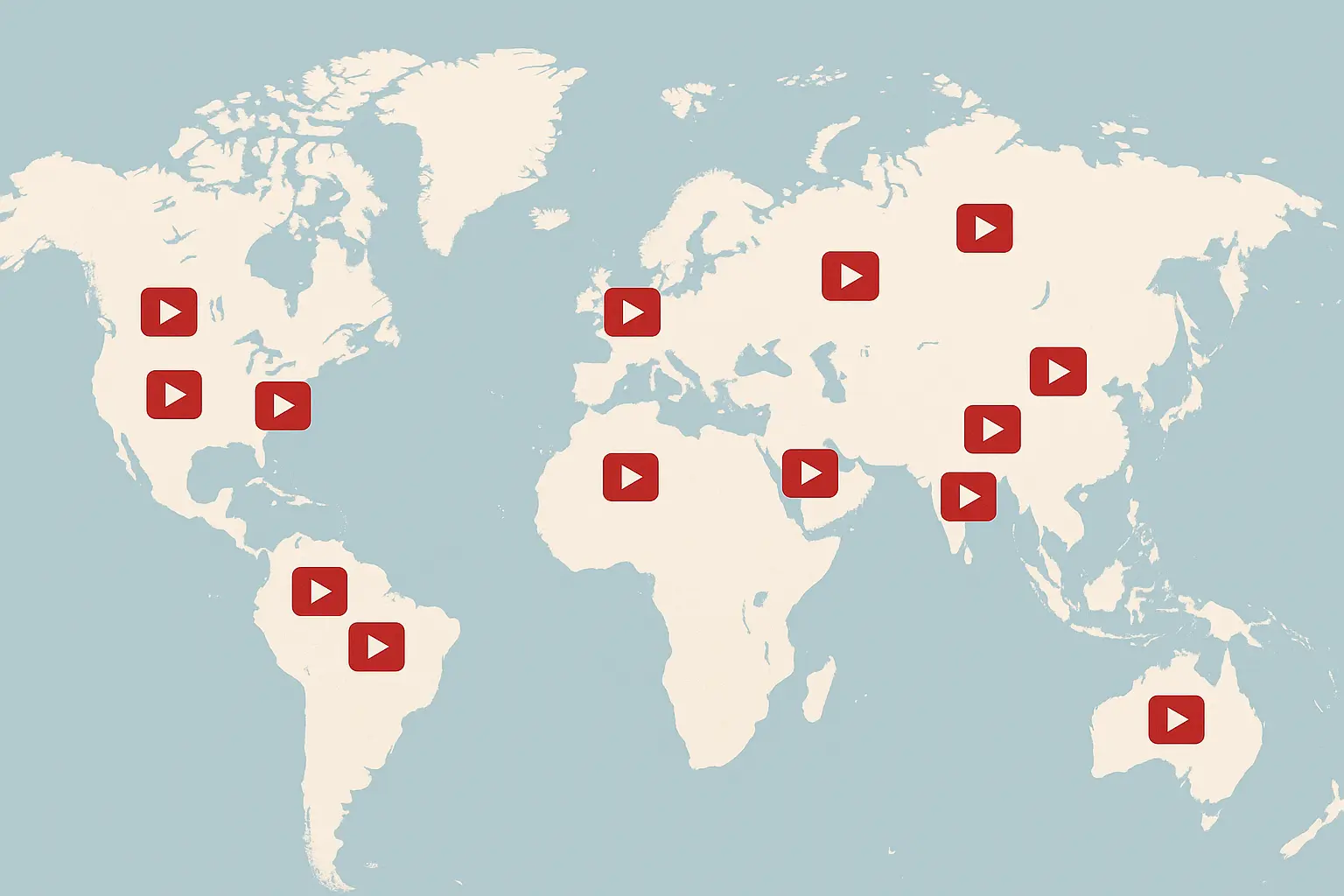
Netflix’s journey from a U.S.-based DVD rental service to a global streaming powerhouse serving over 190 countries is honestly one of the most impressive business transformations I’ve ever studied. By 2017, close to 73 million of its some 130 million subscribers are outside the U.S. Harvard Business Review – proving that you can take a domestic company global without burning through cash or blindly stumbling into new markets.
Table of Contents
- How They Laid the Groundwork (Strategic Foundation)
- Making It Actually Work (Operational Execution)
- Content Strategy That Changed Everything
- Measuring Success and Adapting Fast
- What This Means for Your Business
TL;DR
- Netflix’s global takeover wasn’t luck—it was smart market research, infrastructure planning, and cultural homework that set them up for success
- The technical stuff became their backbone, requiring massive investments in servers, payment systems, and making videos load fast even with terrible internet
- Content strategy evolved from “let’s just translate American shows” to “let’s make authentic local content,” with Netflix investing billions in regional studios and local talent
- They measured way more than just subscriber counts—tracking engagement, content performance, and market penetration to constantly improve their approach
- The whole expansion required balancing global consistency with local relevance, proving that cookie-cutter strategies fail miserably in international markets
How They Laid the Groundwork (Strategic Foundation)
Look, most companies I’ve seen rush into international markets with nothing more than wishful thinking and a Google Translate version of their website. Netflix? They did the complete opposite. These guys treated every market entry like a chess match, not a game of chance.
Their netflix international expansion case study is fascinating when you dig into the numbers. As of 2020, Netflix had 203.67 million subscribers worldwide, with over 73 million in the U.S. alone. By early 2022, this number grew to 222 million international subscribers across over 190 countries. The Strategy Institute
Think about it like this: it’s similar to how businesses need solid market sizing analysis to figure out if an opportunity is worth pursuing – Netflix just did this homework on steroids for every single country they entered.
Market Research and Entry Strategy Development
Netflix’s market research wasn’t your typical “let’s count potential customers and call it a day” approach. They went way deeper than that. These guys wanted to understand not just who might subscribe, but how people actually consumed content in different parts of the world.
Here’s what really got my attention: they looked at viewing habits, cultural preferences, and content consumption patterns before making any moves. Do people binge-watch entire seasons on weekends? Do they prefer 20-minute episodes during lunch breaks? Are they watching on phones, tablets, or TVs? This stuff matters way more than you’d think.
The infrastructure assessment was equally smart. Netflix couldn’t afford to launch in markets where their service would crash and burn due to crappy internet infrastructure. They evaluated internet speeds, streaming capabilities, and device adoption across potential markets. I mean, what’s the point of launching a streaming service somewhere if people can’t actually stream?
And don’t get me started on the regulatory nightmare they had to navigate. Broadcasting laws, content regulations, and government policies were all over the map. Netflix had to become experts in international entertainment law just to avoid getting shut down or fined into oblivion.

Content Preference Analysis Methodologies
This is where Netflix got really clever. They didn’t just ask people what they wanted to watch – because let’s be honest, we all say we want to watch documentaries when we really just want reality TV.
Instead, they combined hard data with cultural research. They discovered that humor doesn’t translate at all. What’s hilarious in America might be completely confusing or even offensive in Japan. Even basic things like color preferences had cultural significance – red might be lucky in one culture and associated with danger in another.
The crazy part? They found that even episode lengths varied wildly between countries. Some places loved 45-minute episodes, others got bored after 20 minutes. Netflix had to become cultural anthropologists just to figure out their content strategy.
Cultural nuances played a huge role in everything they did. Netflix learned that storytelling styles, visual aesthetics, and even the way characters interacted had to be adapted for different markets. What worked as drama in one country might be seen as comedy in another.
| Market Research Component | Key Metrics Analyzed | Strategic Impact |
|---|---|---|
| Content Preferences | Viewing duration, genre popularity, completion rates | Content acquisition and production decisions |
| Infrastructure Assessment | Internet speeds, device penetration, data costs | Technology optimization and pricing strategies |
| Cultural Analysis | Storytelling preferences, humor styles, visual aesthetics | Localization and marketing approaches |
| Competitive Landscape | Market share, pricing models, content libraries | Positioning and differentiation strategies |
| Regulatory Environment | Content restrictions, tax implications, broadcasting laws | Compliance planning and market entry timing |
Infrastructure Readiness Assessment
Here’s something that’ll blow your mind – Netflix actually had to check if countries could handle their service before launching. Imagine spending millions on marketing only to have your service constantly buffer because the local internet infrastructure couldn’t handle it.
They looked at everything: internet speeds, data costs (huge deal in some countries), and whether people even had the right devices. In some markets, streaming a single episode could cost someone their entire monthly entertainment budget due to expensive data plans.
Payment system availability was another headache. You can’t just assume everyone has a credit card. In many places, people pay for everything with mobile money, bank transfers, or even cash. Netflix had to figure out how to collect payments in dozens of different ways.
The company learned early that technical problems could destroy their brand reputation faster than any marketing campaign could build it. One bad streaming experience could turn a potential customer into someone telling all their friends that Netflix sucks.
Regulatory Environment Mapping
This part was probably the most boring but absolutely critical work Netflix had to do. Every country has different rules about taxes, content restrictions, and how foreign companies can operate.
Tax implications became particularly complex as Netflix expanded. Different countries had completely different approaches to taxing digital services, which affected pricing strategies and profit margins. Some places treated streaming services like physical goods, others had special digital tax categories.
Content regulations were even trickier. What Netflix could stream in one country might be restricted or completely banned in another. These weren’t just obvious content issues – cultural sensitivities, political themes, and even historical interpretations could trigger regulatory problems.
Netflix had to build systems that could automatically manage content availability based on where someone was watching from while keeping the user experience smooth. It’s like having a different movie collection for every country in the world, all managed automatically.
Competitive Landscape Analysis
Netflix couldn’t just waltz into international markets assuming they’d dominate like they did in the US. Every country had its own streaming services, TV networks, and entertainment companies that weren’t going to roll over and let Netflix steal their customers.
The smart thing they did was really study their competition. Not just the obvious stuff like what shows they had, but how they operated, what they charged, and what customers actually thought about them. Local streaming services often had first-mover advantages and established relationships that Netflix needed to overcome.
Traditional broadcasters presented different challenges. These companies had decades of relationships with local audiences and content creators. Netflix had to figure out how to compete with that kind of established presence.
The competitive landscape keeps evolving too. Tving will launch a dedicated branded section within WBD’s streaming service HBO Max, available across regions including Southeast Asia, Taiwan and Hong Kong by early next year Korea Times, showing how regional players are forming alliances to compete with Netflix’s dominance.
Local Player Assessment
Every market had its own streaming landscape. Some places had one dominant player, others had five or six companies fighting for market share. Netflix had to understand these dynamics before jumping in.
The quality varied dramatically too. Some local services were actually pretty good – great content, decent technology, fair prices. Others were stuck in 2005 with terrible user interfaces and limited libraries that crashed constantly.
Netflix looked for gaps they could fill. Maybe the local service had great regional content but terrible international shows. Or maybe they had good content but their app was a nightmare to use. These gaps became Netflix’s entry points.
In fragmented markets, Netflix could compete on having the best overall service. In markets dominated by one player, they had to find specific advantages – maybe better technology, more international content, or superior user experience.
Pricing Strategy Benchmarking
Here’s where Netflix learned that you can’t just convert US prices to local currency and call it a day. What seems reasonable in New York might be outrageously expensive in Mumbai, or surprisingly cheap in London.
They had to understand what people were already paying for entertainment and what they considered good value. Subscription tiers and value propositions varied dramatically across competitors in different markets.
Local economic conditions affected everything. Netflix discovered that pricing wasn’t just about affordability – it was about perceived value relative to local alternatives. A premium price could actually help their brand in some markets while destroying it in others.
The tricky part was that pricing strategy was as much psychology as economics. Sometimes being more expensive actually helped Netflix’s brand because people associated higher prices with better quality. Other times, even being slightly pricier than local options killed their chances.
Cultural Integration Planning
This is where Netflix had to become way more than just a technology company. They needed to understand cultures, respect traditions, and build authentic relationships with local audiences without coming across as another American company trying to export their values.
Simply translating content wasn’t enough – they had to adapt their entire platform experience. User interfaces, recommendation algorithms, and even customer service approaches needed to feel local, not like an American service awkwardly translated.
Partnership strategies became essential for cultural authenticity. Netflix figured out early that they needed local content creators, distributors, and technology providers to accelerate market entry and avoid embarrassing cultural mistakes.
Netflix’s partnership with Yoshimoto Kogyo in Japan is a perfect example. Instead of just dubbing American content, Netflix collaborated with this major Japanese entertainment company to produce original series and movies specifically for Japanese audiences, understanding that local content was crucial for success.
Content Localization Framework
Netflix developed approaches that went way beyond dubbing and subtitles. They needed to adapt existing content and create original programming that actually reflected local cultures and storytelling traditions.
Visual elements, cultural references, and narrative structures all required adaptation. What resonated with American audiences might fall completely flat or even offend people in other cultures. Quality control became huge because poor localization could damage their reputation overnight.
The company invested heavily in understanding local storytelling traditions, humor styles, and cultural taboos. This knowledge informed everything from what content to license to how they marketed shows in different regions.
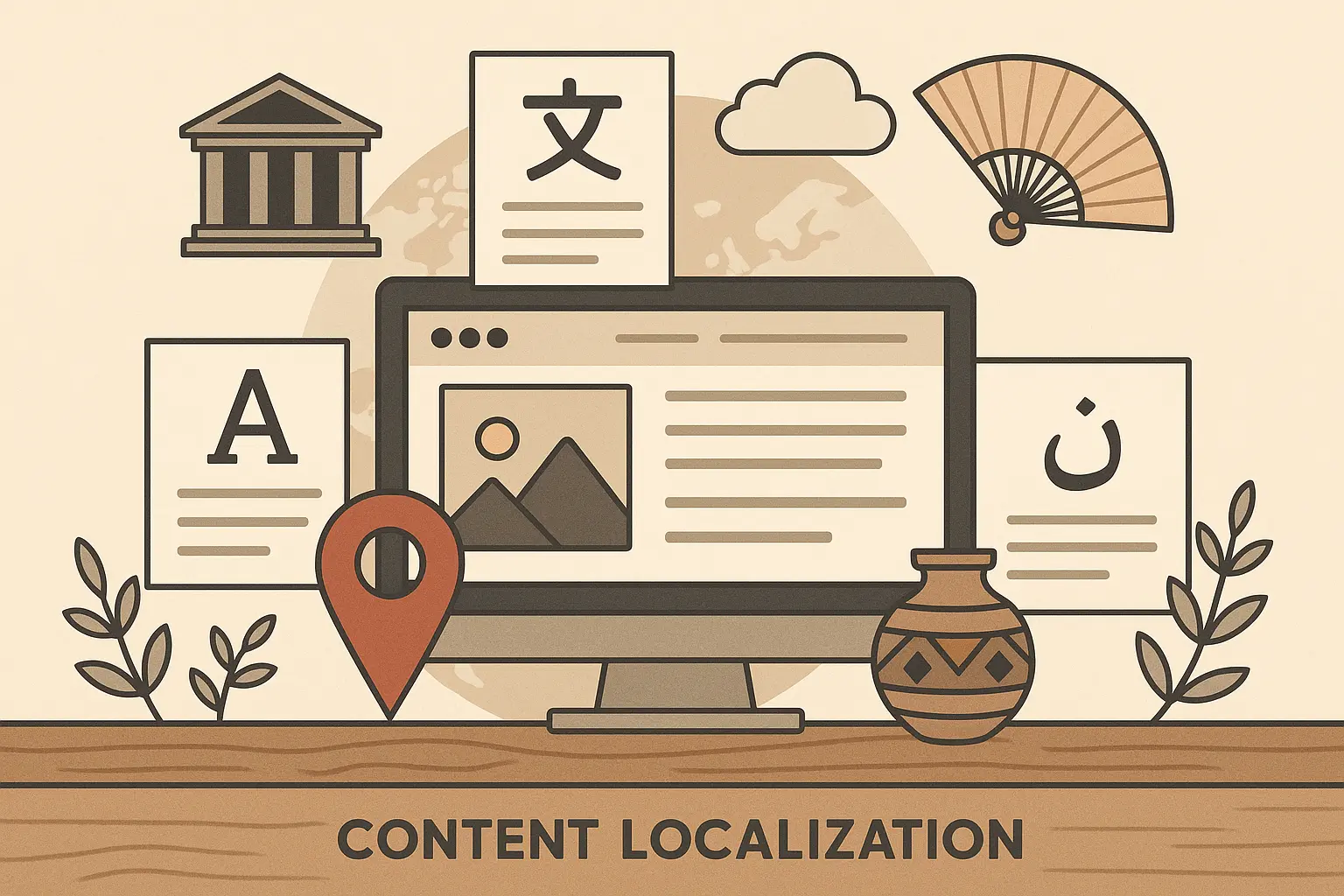
User Experience Customization
Platform interfaces had to accommodate different languages, reading patterns, and cultural preferences. Some markets read right to left, others preferred different color schemes or navigation styles. These weren’t just nice-to-have features – they were essential for user adoption.
Recommendation algorithms needed major cultural calibration. Netflix’s AI had to learn local viewing preferences and cultural context to make relevant suggestions. The algorithm that worked great for American users often made terrible recommendations in other markets.
Payment flows and customer service approaches also needed localization. Different cultures had completely different expectations for how companies should interact with customers. Some preferred formal communication, others wanted casual and friendly interactions.
Users could immediately tell when a platform felt foreign or culturally tone-deaf. Getting these details right was the difference between feeling like a local service and obviously being an American company trying to expand overseas.
Partnership Strategy Development
Netflix’s smartest move was admitting they couldn’t figure out every culture from scratch. They needed local content creators who could provide authenticity that Netflix couldn’t achieve independently.
Distribution partnerships offered market entry advantages. Working with established local players could speed up Netflix’s market penetration and reduce initial investment requirements. These partnerships helped them understand cultural nuances and build credibility.
Technology partnerships helped overcome infrastructure challenges. Local CDN providers and tech companies could provide market-specific expertise and capabilities that would take Netflix years to develop independently.
These partnerships required careful balance though. Netflix had to maintain their global standards while respecting local expertise and cultural knowledge. Too much control and they’d lose local authenticity. Too little and they’d compromise quality.
Making It Actually Work (Operational Execution and Technology Infrastructure)
Here’s where Netflix’s expansion gets really impressive – and really expensive. They basically had to rebuild their entire technology infrastructure for global scale while keeping everything running smoothly for existing customers.
Think about the challenge: Netflix had to ensure someone in rural India could stream “Stranger Things” as smoothly as someone in downtown Los Angeles. That’s not just a technical problem – it’s a massive logistical and financial undertaking that required hundreds of millions in investment.
Similar to how businesses need advanced analytics for strategic growth, Netflix’s global expansion required sophisticated data systems to monitor and optimize performance across wildly different international markets.
Content delivery became exponentially more complex. They needed fast, reliable streaming across different internet infrastructures and geographic distances while adapting to diverse technical environments and user expectations.
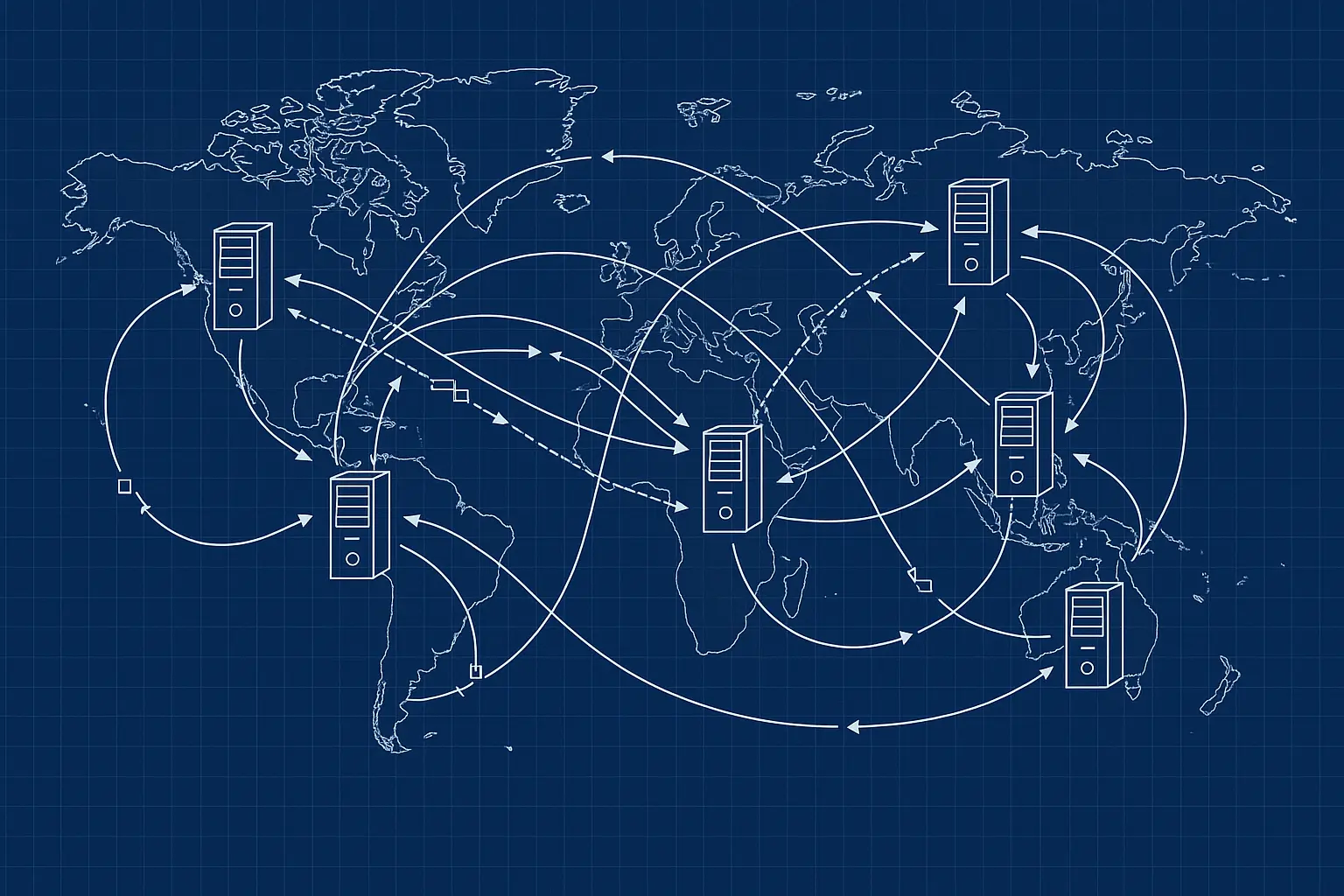
Global Content Delivery Network Expansion
Netflix’s CDN expansion was like building highways across the entire world, except these highways had to carry high-definition video instead of cars. We’re talking about one of their largest infrastructure investments – hundreds of millions of dollars in server hardware deployed across dozens of countries.
They couldn’t rely on third-party providers alone to deliver the quality experience their brand promised. Netflix had to build their own network of servers strategically placed around the world to ensure fast streaming no matter where you were.
The scale was staggering. Netflix essentially had to predict what millions of people in different countries would want to watch and pre-position popular content on local servers. Imagine trying to guess what everyone will binge-watch next week across 190+ countries – that’s the kind of predictive analytics they had to master.
Regional Server Deployment Strategy
Server placement wasn’t just about geography – it was about politics, economics, and technology all rolled into complex decisions. Netflix had to consider political stability (you don’t want servers seized by unstable governments), local technical expertise, and internet infrastructure quality.
Time zones created another nightmare. Netflix’s servers had to handle peak viewing times that rolled around the globe like a wave. When it’s 8 PM in Tokyo, it’s 8 AM in New York. The infrastructure had to be ready for these predictable traffic surges without crashing.
Local partnerships often made the difference between success and failure. Working with regional internet service providers and data center operators wasn’t just helpful – it was essential for getting servers deployed quickly and maintaining them properly.
The company discovered that server deployment was as much about relationships and local knowledge as cutting-edge technology. You can’t just ship servers to a country and expect everything to work perfectly.
Bandwidth Optimization Technologies
This is where Netflix got really clever with their tech. They developed compression algorithms that could deliver high-quality video even over slow internet connections. It’s almost like magic – the same show that normally needed super-fast internet could stream smoothly on basic connections.
Adaptive streaming was a game-changer. The system automatically adjusts video quality based on your internet speed in real-time. Connection slows down? Video quality drops slightly but keeps playing. Speed improves? Quality bumps back up. Most users never even notice it happening.
Caching strategies were equally brilliant. Netflix’s systems learned to predict what content would be popular in each region and pre-loaded it onto local servers. This meant popular shows started playing almost instantly, even in markets with challenging internet infrastructure.
These technologies weren’t just cool features – they were business necessities. Without them, Netflix couldn’t have succeeded in markets where internet infrastructure wasn’t as developed as the US.
Payment Systems Integration
Here’s something most people don’t think about: Netflix had to become experts in international finance just to collect subscription payments. Every country has different payment preferences, banking systems, and financial regulations that had to be navigated.
Payment system complexity multiplied with each new market. Different countries had unique preferences, regulatory requirements, and fraud patterns that Netflix had to understand and accommodate.
The importance of getting this right showed in their early success. Netflix began its international expansion in 2010, starting with Canada, where it gained 1 million subscribers in less than a year—about 3% of Canada’s population The Strategy Institute, proving that proper payment infrastructure was crucial for rapid subscriber growth.
Local Payment Method Adoption
In some markets, credit cards were rare and people paid for everything with mobile money or bank transfers. Netflix had to integrate with services like M-Pesa in Kenya and similar systems in other developing markets. These weren’t just technical challenges – they required understanding completely different financial ecosystems.
Regional credit card networks often provided better conversion rates than international alternatives like Visa or Mastercard. Netflix discovered that supporting local payment processors could significantly improve their subscription conversion rates.
Alternative payment systems like digital wallets, bank transfers, and even cash payments (through retail partnerships) required additional development work but opened access to customers who couldn’t or wouldn’t use traditional payment methods.
Each payment integration represented weeks or months of technical development, testing, and compliance work. The complexity grew exponentially with each new market, but the business impact was huge.
| Payment Integration Challenge | Technical Solution | Market Impact |
|---|---|---|
| Mobile Money Systems | API integration with local providers | Access to unbanked populations |
| Currency Fluctuations | Real-time exchange rate systems | Consistent pricing strategies |
| Regional Card Networks | Multi-processor payment gateway | Improved conversion rates |
| Tax Compliance | Automated tax calculation systems | Regulatory compliance |
| Fraud Prevention | Localized detection algorithms | Reduced payment fraud |
Currency Management Systems
Exchange rate fluctuations could make or break Netflix’s pricing strategy overnight. A currency that weakened significantly could make Netflix too expensive for local customers, while a strengthening currency could hurt revenue when converted back to dollars.
Netflix needed systems that could handle real-time currency conversion, automatic price adjustments, and complex revenue reporting across dozens of currencies. It’s like running multiple businesses in parallel, each with its own financial complexity.
Local tax requirements added another layer of headaches. Different countries tax digital services completely differently, and Netflix had to calculate and remit appropriate taxes in each jurisdiction. The accounting systems required rivaled those of major multinational banks.
The financial infrastructure Netflix built for global operations was probably more complex than what most actual banks operate. They essentially had to become a financial services company to support their streaming business.
Fraud Prevention Localization
Fraud patterns vary dramatically across different cultures and markets. What looks suspicious in one country might be completely normal behavior in another. Netflix had to adapt their detection systems to understand local payment behaviors and cultural norms.
Regional data protection regulations like GDPR in Europe affected how Netflix could collect and use data for fraud prevention. They had to balance security requirements with privacy compliance across different legal frameworks.
Building relationships with local law enforcement became necessary for serious fraud cases. Netflix had to establish processes for working with international authorities while navigating different legal systems and languages.
Effective fraud prevention required understanding local criminal patterns, payment behaviors, and regulatory requirements – a massive undertaking that had to be customized for each major market.
Content Strategy That Changed Everything
Here’s where Netflix made their boldest and most expensive bet: instead of just licensing American shows for international markets, they decided to become a local content creator in dozens of countries simultaneously. The scale of this investment was unprecedented – we’re talking billions of dollars in regional content production.
Netflix realized early that dubbed American shows weren’t going to cut it long-term. Sure, people might watch “Friends” with subtitles, but to really compete with local broadcasters and streaming services, they needed authentic local content that reflected regional cultures and storytelling traditions.
The content strategy shift was massive. Netflix went from being a distributor of existing content to becoming one of the world’s largest content producers, with original programming in dozens of languages across multiple continents.
The importance of localized content continues driving industry strategies. Netflix’s global expansion strategy has been nothing short of a masterclass in content localisation. Instead of just pushing American content worldwide, Netflix has invested heavily in creating and acquiring original programming tailored to local tastes and languages Accuracast, highlighting how content localization remains crucial for streaming success.

Local Content Production Investment
Netflix’s commitment to local content was staggering. They weren’t just funding a few shows here and there – they were essentially building entire entertainment industries in some markets. The investment included production facilities, talent development programs, and long-term partnerships with local creative communities.
Regional production capabilities required understanding each market’s unique creative ecosystem. You can’t just export Hollywood’s production model to Mumbai or Seoul and expect it to work. Different markets have different talent pools, production traditions, and creative processes that had to be respected and understood.
Cultural authenticity became non-negotiable. Netflix learned that audiences could immediately tell when content felt foreign or inauthentic. Local content had to genuinely reflect regional cultures while maintaining Netflix’s production quality standards – a delicate balance that required serious investment and expertise.
The scale was unprecedented for a streaming company. Netflix was creating jobs and developing creative industries that hadn’t existed before in some markets. This wasn’t just business strategy – it was cultural and economic development on a massive scale.
Regional Production Studio Development
Building production capabilities from scratch in multiple countries simultaneously was incredibly complex. Netflix had to find or build studio facilities, establish relationships with equipment suppliers, and navigate different regulatory environments for film production in each market.
Local talent development became essential for sustainable content production. Netflix couldn’t fly in American crews for every production – they needed to develop local expertise in everything from cinematography to post-production to visual effects.
Creative partnerships with established local producers provided cultural credibility and market knowledge that Netflix couldn’t develop independently. These partnerships were crucial for understanding local storytelling traditions and audience preferences that weren’t obvious to outsiders.
Netflix’s investment in Korean content production perfectly illustrates their regional studio development strategy. They established production partnerships and facilities in South Korea, leading to global hits like “Squid Game” and “Kingdom” that proved local content could achieve worldwide success while maintaining cultural authenticity.
Talent Acquisition and Development
Netflix had to become talent scouts in dozens of countries, looking for actors, directors, and writers who could create authentic local content. This wasn’t just about finding famous people – they needed to discover and develop emerging talent who understood their local cultures intimately.
The career development programs Netflix created were impressive. They weren’t just hiring talent for individual projects – they were investing in long-term relationships and helping build entire careers. This created loyalty and gave Netflix access to the best creative minds in each market.
Cross-cultural collaboration became one of Netflix’s secret weapons. They started bringing together talent from different countries to work on projects, creating content that could appeal to multiple markets while maintaining authenticity. Korean directors working with Brazilian writers often produced surprisingly successful results.
Building these talent networks took years of relationship building and serious investment in local entertainment ecosystems. Netflix wasn’t just hiring people – they were helping create entire creative communities that didn’t exist before.
Content Licensing and Distribution
The licensing game got incredibly complicated as Netflix expanded internationally. Content rights are like a giant jigsaw puzzle where every piece has different rules depending on where you are in the world.
Rights management became a full-time job for armies of lawyers and content specialists. A show that Netflix could stream everywhere in the US might be blocked in half of Europe due to existing licensing deals with local broadcasters or distributors.
Content mix optimization became crucial for balancing costs and audience appeal. Netflix had to figure out the right combination of licensed content, original productions, and co-productions for each market. Too much licensed content and you’re just another distributor. Too much original content and your costs explode.
The challenge of building region-specific content libraries was enormous. While the U.S. had 10,625 unique titles in 2012, Canada had only 2,647, and Australian local content ranged from just 1.7% to 2.5% of the catalog between 2017 and 2019 The Strategy Institute, showing how complex it was to build different libraries for each market.
Rights Management Complexity
Territorial licensing restrictions meant Netflix needed systems that could automatically manage what content was available where. It’s like having a completely different Netflix library for every country, with content appearing and disappearing based on complex licensing agreements that changed constantly.
Windowing agreements added another layer of complexity. Netflix might be able to stream a movie in one country immediately but have to wait six months in another market due to existing deals with local theaters, broadcasters, or other distributors.
Legal compliance required constant monitoring because licensing terms could change without warning, and violations could result in massive fines or content being pulled from the service. Netflix needed teams of people just to make sure they weren’t accidentally breaking licensing agreements.
The legal infrastructure required to manage global content rights was probably more complex than what most major media companies operate. Netflix had to become experts in entertainment law across dozens of different legal systems simultaneously.
Content Mix Optimization
Budget allocation across licensed content and original productions required careful analysis of what actually drove subscriber acquisition and retention in each market. Some markets responded better to familiar international content, while others strongly preferred local programming.
Co-production opportunities became a smart way to share costs while creating content with broader international appeal. These partnerships required careful negotiation but could result in shows that worked across multiple markets, maximizing return on investment.
Performance analytics helped Netflix understand which types of content investment provided the best return in different markets. The data often revealed surprising insights about what audiences actually wanted versus what they claimed to prefer in surveys.
Each market required a unique content strategy based on local preferences, competitive dynamics, and economic conditions. What worked brilliantly in one region could completely fail in another with seemingly similar demographics.
Cross-Cultural Content Strategy
Netflix’s holy grail became creating content that could succeed across multiple markets while maintaining cultural authenticity. This required understanding universal human themes while respecting important local cultural differences.
Cultural sensitivity became crucial for content distributed internationally. Netflix had to avoid content that might offend or alienate audiences in different markets while still creating compelling entertainment that felt authentic.
Marketing strategies required complete adaptation for different cultural contexts. A show that was marketed as a comedy in one market might be positioned as a drama in another, depending on how local audiences interpreted the content.
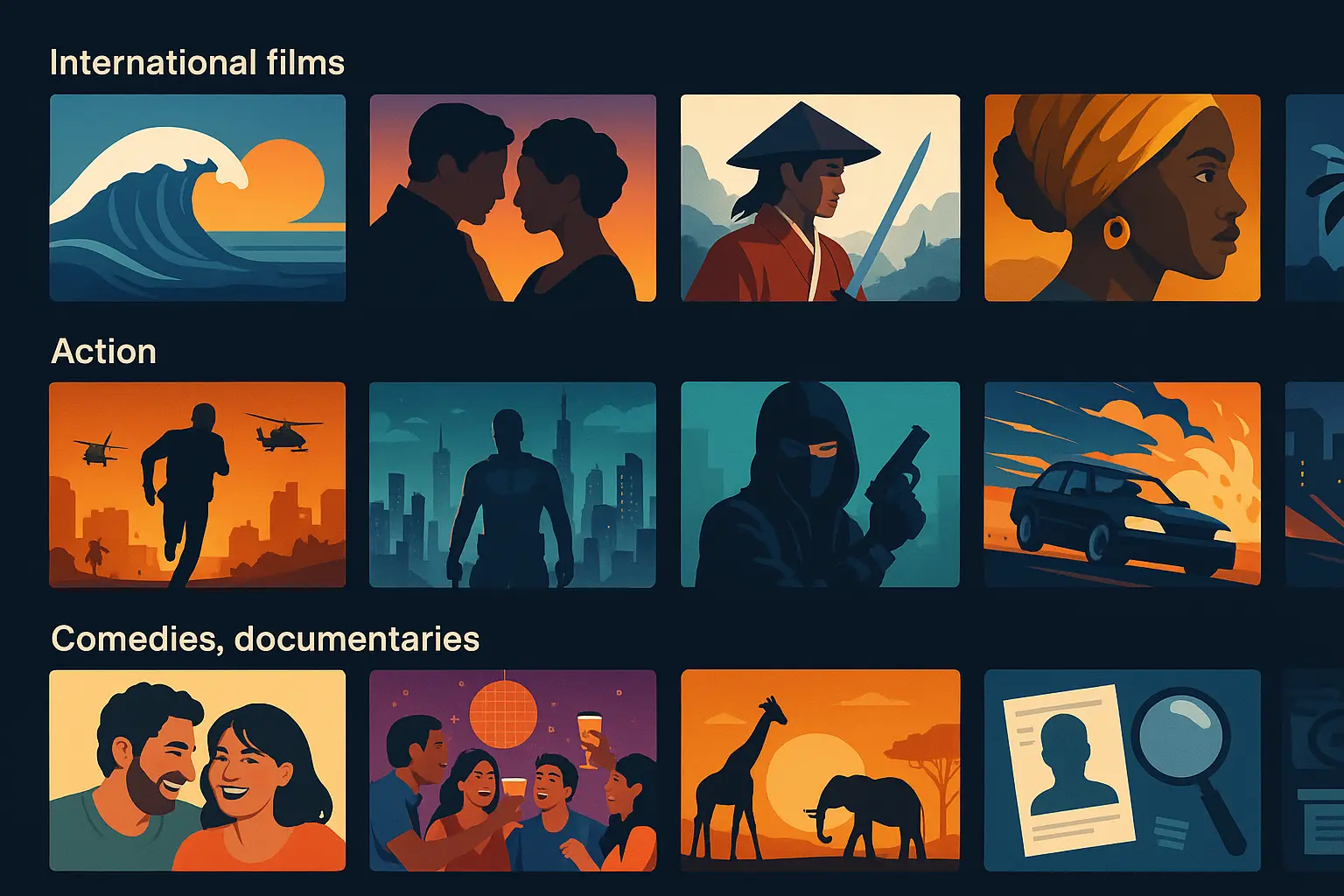
Netflix’s approach to “Money Heist” (La Casa de Papel) demonstrates their cross-cultural content strategy perfectly. Originally produced for Spanish audiences, Netflix acquired global rights and invested in international marketing, leading to worldwide success and proving that well-crafted local content could achieve global appeal with proper distribution and promotion.
Measuring Success and Adapting Fast
Measuring success across dozens of international markets was like trying to compare apples, oranges, and pineapples. Each market had different competitive dynamics, user behaviors, and success metrics that actually mattered for business growth.
Just like businesses need accurate ROI calculators to measure campaign performance, Netflix required sophisticated analytics frameworks to evaluate their international expansion investments across multiple markets and metrics that often contradicted each other.
Netflix couldn’t just look at subscriber numbers and call it a day. They needed to understand the quality and sustainability of their growth in each market. A million subscribers in one country might represent amazing success, while the same number in another market could indicate serious underlying problems.
Market adaptation became a continuous process of testing, learning, and optimizing. Netflix’s initial strategies rarely worked perfectly out of the gate, so they needed systems to quickly identify what wasn’t working and make adjustments before burning through their budgets.

Metrics and KPI Framework
Netflix developed measurement systems that went way beyond simple subscriber counts. They needed to understand user engagement, content performance, market penetration, and competitive positioning across diverse markets with completely different dynamics and expectations.
Subscriber acquisition analytics helped Netflix optimize their marketing spend and identify what actually worked for attracting customers in each region. The data revealed that acquisition strategies that worked brilliantly in one market could be completely ineffective in another with similar demographics.
Content engagement measurement provided insights into what programming actually resonated with audiences versus what Netflix thought would work based on their American experience. The results were often surprising and sometimes completely contradicted their assumptions about global preferences.
Subscriber Acquisition Analytics
Customer acquisition costs varied dramatically across international markets. Netflix discovered that the same marketing budget could acquire vastly different numbers of subscribers depending on the market, competitive landscape, and local media costs.
Conversion rate optimization required understanding local user behaviors and cultural preferences. The signup process that worked great for American users might confuse or frustrate users in other cultures, leading to massive differences in conversion rates that weren’t obvious until they tested.
Lifetime value calculations became incredibly complex with different pricing structures, competitive dynamics, and churn patterns across markets. Netflix needed sophisticated models to predict how valuable a subscriber would be over time in each region.
The data revealed surprising insights about user behavior across cultures. Acquisition patterns, content preferences, and retention rates varied far more than Netflix initially expected, forcing them to develop completely different strategies for different markets.
Content Engagement Measurement
Viewing pattern analysis revealed cultural preferences that completely contradicted Netflix’s assumptions. Some markets binged entire seasons in a day, while others preferred to watch one episode per week. These patterns affected everything from content release strategies to server capacity planning.
Completion rates became a crucial indicator of content quality and cultural relevance. High abandonment rates often signaled that content wasn’t connecting with local audiences, regardless of how successful it might be in other markets with different cultural contexts.
User preference data helped Netflix optimize their recommendation algorithms for different markets. The AI that worked great for American users often made terrible suggestions in other cultures because it didn’t understand local context, preferences, and cultural nuances.
These insights drove billions in content investment decisions. Understanding what audiences actually watched versus what they claimed to prefer became crucial for content strategy and budget allocation across different regions.
Market Penetration Assessment
Competitive positioning required understanding Netflix’s market share relative to both local and international competitors. This helped identify growth opportunities and potential threats that might not be obvious from subscriber numbers alone.
Market maturity levels affected growth strategies and investment priorities. Emerging streaming markets required different approaches than established markets with multiple competing services and sophisticated audiences who had lots of options.
Brand awareness tracking helped Netflix understand their market position and identify areas needing additional marketing investment. Sometimes low subscriber numbers reflected poor brand awareness rather than product or content issues that needed to be addressed.
Each market presented unique competitive dynamics that required tailored strategies and measurement approaches. Netflix learned that success metrics that mattered in one market might be completely irrelevant in another with different cultural values and consumption patterns.
Continuous Optimization Strategies
Netflix’s international success depended on systematic testing and optimization across multiple variables and markets. They couldn’t rely on assumptions or one-size-fits-all approaches that might work in their home market.
Similar to how modern digital marketing requires continuous PPC campaign optimization, Netflix’s expansion success depended on systematic A/B testing and performance optimization across different variables and markets that often behaved unpredictably.
A/B testing became essential for optimizing everything from pricing strategies to user interface designs. Netflix tested different approaches simultaneously across markets to identify what actually worked versus what they thought would work based on their American experience.
Feedback loop integration ensured that Netflix could learn from their international experiences and apply those lessons to future expansion efforts and ongoing optimization of existing markets.

A/B Testing Implementation
Pricing strategy testing revealed that optimal pricing varied dramatically across markets based on local economic conditions, competitive pricing, and cultural attitudes toward subscription services and entertainment spending.
User interface optimization required testing different designs and navigation patterns because cultural preferences affected how users wanted to interact with the Netflix platform. Simple changes like button placement, color schemes, or menu organization could significantly impact user engagement.
Marketing message testing showed which value propositions resonated with different audiences. Netflix’s core brand message had to be adapted for various cultural contexts while maintaining brand consistency and recognition across markets.
The testing infrastructure required massive technical investment to run simultaneous experiments across dozens of markets while maintaining statistical significance and avoiding interference between different tests running in the same regions.
Feedback Loop Integration
User feedback collection systems provided direct insights into customer satisfaction and areas for improvement that weren’t obvious from behavioral data alone. Netflix needed to understand how their service was perceived in different cultural contexts and what frustrated or delighted users.
Market research integration helped Netflix stay current with changing preferences and competitive dynamics. Internal data was valuable, but external market intelligence was crucial for understanding broader trends and potential threats from new competitors.
Performance data analysis enabled Netflix to identify patterns that might not be obvious from individual market data. Cross-market insights often revealed opportunities or problems that weren’t apparent when looking at markets in isolation.
Cross-market learning became one of Netflix’s most valuable capabilities. Successful strategies in one market could often be adapted for similar regions, accelerating expansion and reducing costly trial-and-error approaches that burned through budgets.
Data integration across markets provided Netflix with unprecedented insights into global streaming behaviors and preferences. They could identify universal trends while respecting important local differences that affected content strategy and user experience design.
Strategic pivots based on performance data allowed Netflix to course-correct quickly when initial strategies weren’t working. This agility became crucial for international success in rapidly changing markets with evolving competitive landscapes.
International Expansion Checklist:
- Research the hell out of your target markets (don’t assume anything)
- Make sure your technology can actually work there reliably
- Figure out how people want to pay you in each market
- Understand what content people actually want (not what you think they want)
- Build systems to measure what’s working and what isn’t
- Plan to adapt everything based on real-world feedback
- Get local partners who know things you don’t
- Prepare for regulatory complexity and compliance requirements
- Design infrastructure that can scale without breaking
- Accept that your first attempt probably won’t be perfect
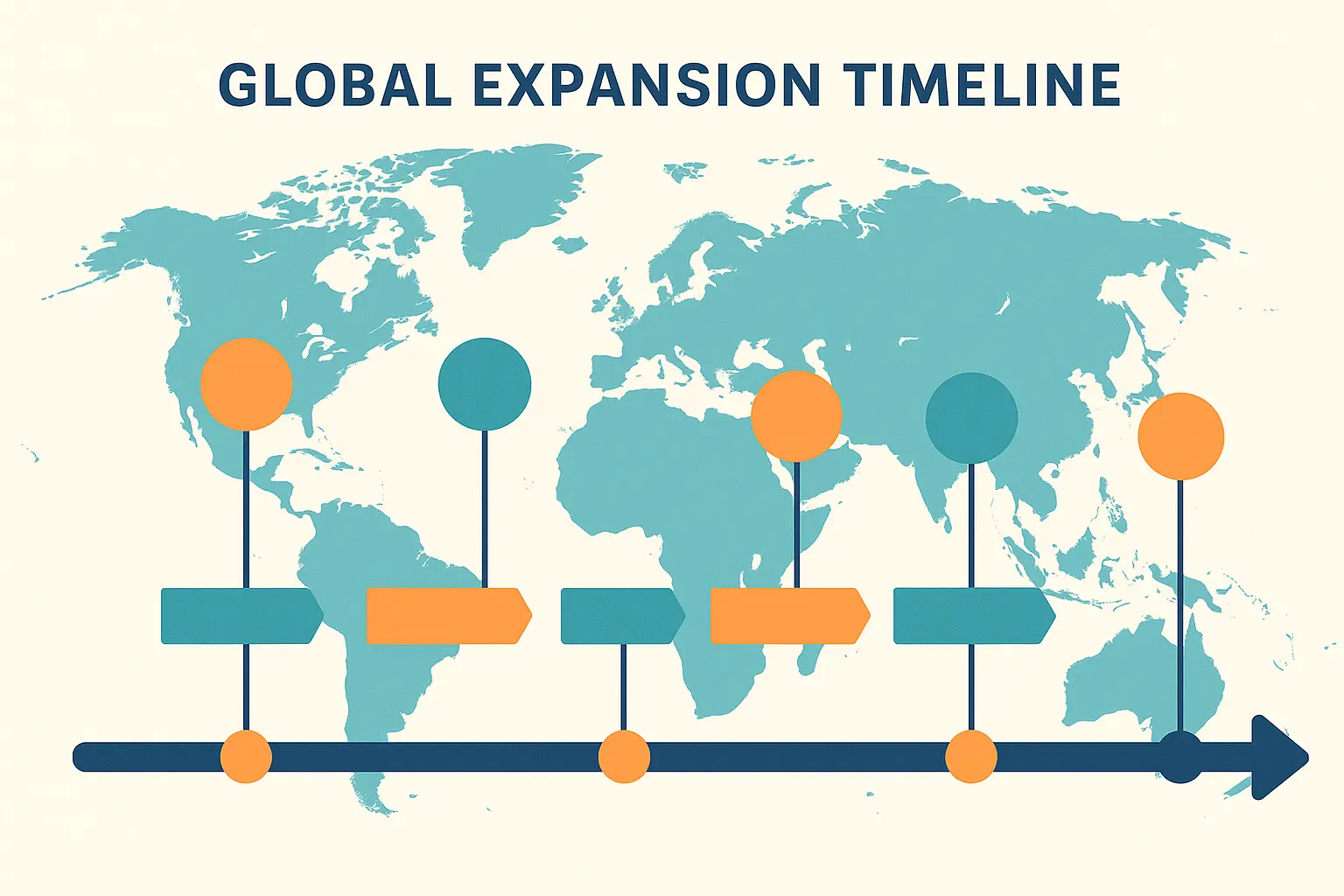
What This Means for Your Business
Netflix’s international expansion story is pretty incredible when you really dig into it. They took a DVD rental company and turned it into a global entertainment powerhouse serving over 190 countries. But here’s the thing – it wasn’t luck or just having deep pockets to throw at problems.
What really impresses me about Netflix’s approach is how methodical they were about everything. While most companies just throw their product at international markets and hope something sticks, Netflix did their homework. They researched cultures, built infrastructure, respected local preferences, and measured everything obsessively.
The balance they struck between global consistency and local relevance is probably the most impressive part. They kept their core value proposition – great content, easy streaming, reasonable prices – while adapting to wildly different markets and cultural preferences. That’s not easy to pull off without losing your brand identity.
Sure, Netflix had billions to spend on this expansion, which most businesses don’t have. But the underlying methodology – research thoroughly, invest in infrastructure, respect local cultures, measure everything – can work for companies of any size if you scale it appropriately.
What strikes me most is how Netflix proved that international expansion doesn’t have to be a shot in the dark. With the right approach, data-driven decision making, and willingness to adapt based on real feedback, businesses can expand globally without the typical catastrophic failures we see so often.
The lessons here apply whether you’re Netflix expanding to 190 countries or a small business considering your first international market. The scale is different, but the principles are exactly the same: understand your markets, respect local differences, and be ready to learn and adapt quickly.
For businesses looking to go global, Netflix’s case study shows that success comes from treating each market as a unique challenge rather than assuming what works at home will work everywhere else. It’s more work upfront, but it’s the difference between sustainable international growth and expensive international failures that kill companies.
The Marketing Agency understands these challenges and helps companies navigate international expansion through data-driven marketing strategies that actually work. Our PPC campaigns can provide immediate market entry traction while you’re building your presence, and our content marketing services help establish thought leadership in new markets without the cultural missteps that destroy brands.
Ready to take your business global without the guesswork? The Marketing Agency’s performance-focused approach can help you expand internationally using these proven principles. Contact us today to discuss how we can apply Netflix’s smart expansion methodology to your business growth strategy.




